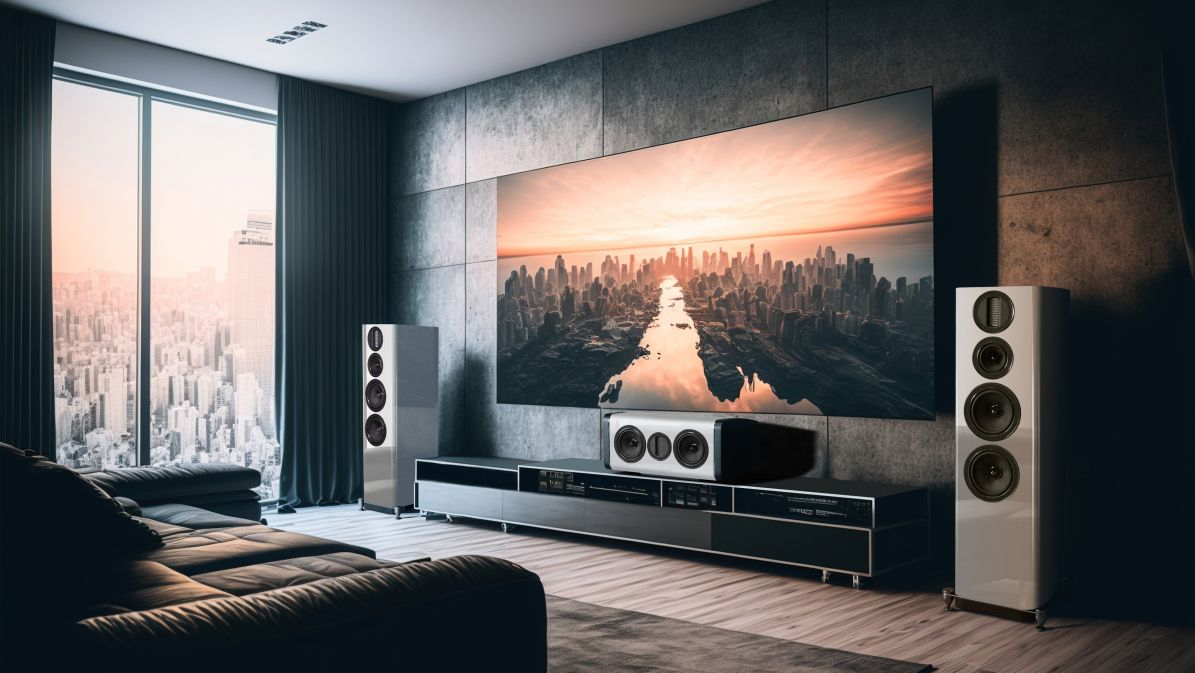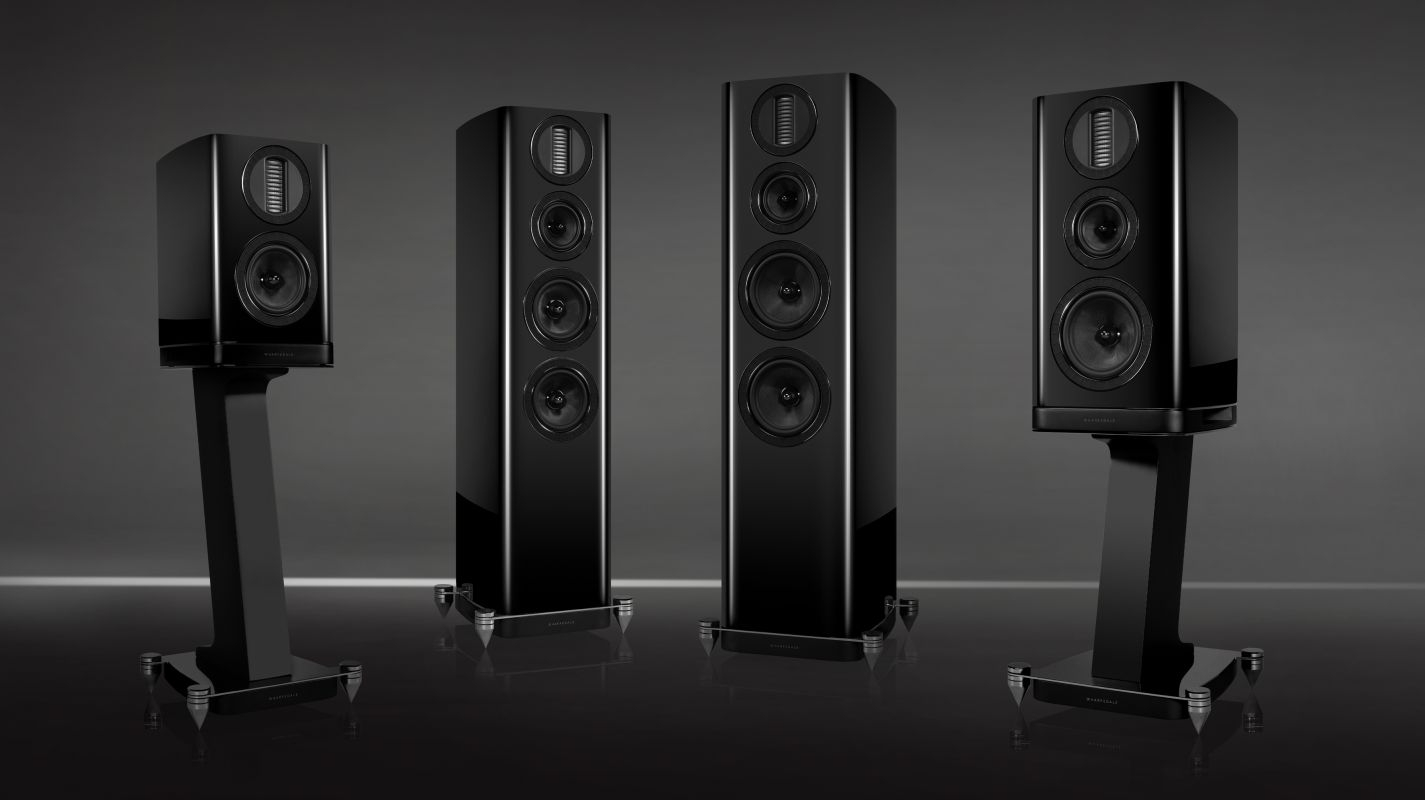Wharfedale’s Aura range promises flagship-level engineering that won't burn a hole in your pocket
Speaker range claims prices that "won't require you to remortgage your home"

We recently detailed how groundbreaking technologies and innovations that are originally seen in high-end hi-fi designs do slowly trickle down into the more affordable reaches of the market. That, to an extent, seems to be the process involved in the creation of the Wharfedale Aura series, a new range of speakers that takes much of its inheritance from the British brand's more established premium designs.
Wharfedale's new range of Aura speakers (which we first glimpsed during High End Munich 2023) consists of two standmount models (the Aura 1 and Aura 2), two floorstanders (the Aura 3 and Aura 4), and two centre speakers for using within 5.1 home cinema systems (the Aura C and Aura CS). The smaller standmounts are two-way models, whereas the larger standmount and both floorstanders are three-way designs with dedicated midrange units accompanying the signature AMT (Air Motion Transfer) tweeter.
According to Wharfedale, the new speakers are similar in size to the established EVO4 range, albeit slightly larger. In terms of the internal components and technical elements such as the the drivers, cabinets and crossover networks, the new series is directly influenced by the flagship Wharfedale Elysian series.
That aforementioned AMT tweeter is key to the new range, which is present in all Aura speakers. Wharfedale says the AMT's folded design allows for a diaphragm that operates over a larger area, and is able to deliver the high frequencies with greater efficiency and with better dynamics.

On the other end of the sonic spectrum, the Aura series uses bass and midrange cones made from a woven glass fibre matrix for low mass but high rigidity – another design taken from the Elysian range. Additionally, the crossover networks in the Aura series are designed to reduce electromagnetic interference, while Wharfedale’s own SLPP (Slot Loaded Profiled Port) design aims to minimise turbulence and deliver a more efficient bass reflex system.
The two-way Aura 1 standmounter uses a 13cm mid/bass driver, while the three-way Aura 2 standmounter features a 10cm midrange driver with a 15cm woofer. The two floorstanders use the same 10cm midrange unit as the Aura 2, with twin 13cm bass drivers for the Aura 3, going up to two 15cm bass drivers in the larger Aura 4 floorstander.
Each of the Aura speakers’ cabinets is lacquered and polished, and while those smooth curves are easy on the eye, Wharfedale claims they also "help to disperse the acoustic output of the drive units smoothly into the room without undesirable reflections". Beneath the veneer are layered woods of differing densities designed to minimise panel resonance and stop unwanted internal sound energy from affecting the drivers' forward outputs.
The latest hi-fi, home cinema and tech news, reviews, buying advice and deals, direct to your inbox.
The new Wharfedale Aura series will be available from the week of 9th October in a choice of black, white or walnut wood veneer. Optional stands are available for the Aura 1 and Aura 2 standmounts. Retail prices are as follows:
- Aura 1: £1499 / $1999 / AU$3499 per pair
- Aura 2: £1999 / $2499 / AU$4499 per pair
- Aura 3: £2999 / $3999 / AU$6499 per pair
- Aura 4: £3999 / $4999 / AU$8999 per pair
- Aura CS: £1099 / $1499 / AU$2499 per pair
- Aura C: £1299 / $1799 / AU$2999 per pair
- Stand for Aura 1: £899 per pair / $1199 / AU$1749 per pair
- Stand for Aura 2: £999 per pair / $1299 / AU$2249 per pair
MORE:
Best speakers: budget to premium stereo speakers
The ultimate music tracks to test your hi-fi system
Your hi-fi system's sound is being ruined and you don't even know it

Harry McKerrell is a senior staff writer at What Hi-Fi?. During his time at the publication, he has written countless news stories alongside features, advice and reviews of products ranging from floorstanding speakers and music streamers to over-ear headphones, wireless earbuds and portable DACs. He has covered launches from hi-fi and consumer tech brands, and major industry events including IFA, High End Munich and, of course, the Bristol Hi-Fi Show. When not at work he can be found playing hockey, practising the piano or trying to pet strangers' dogs.
